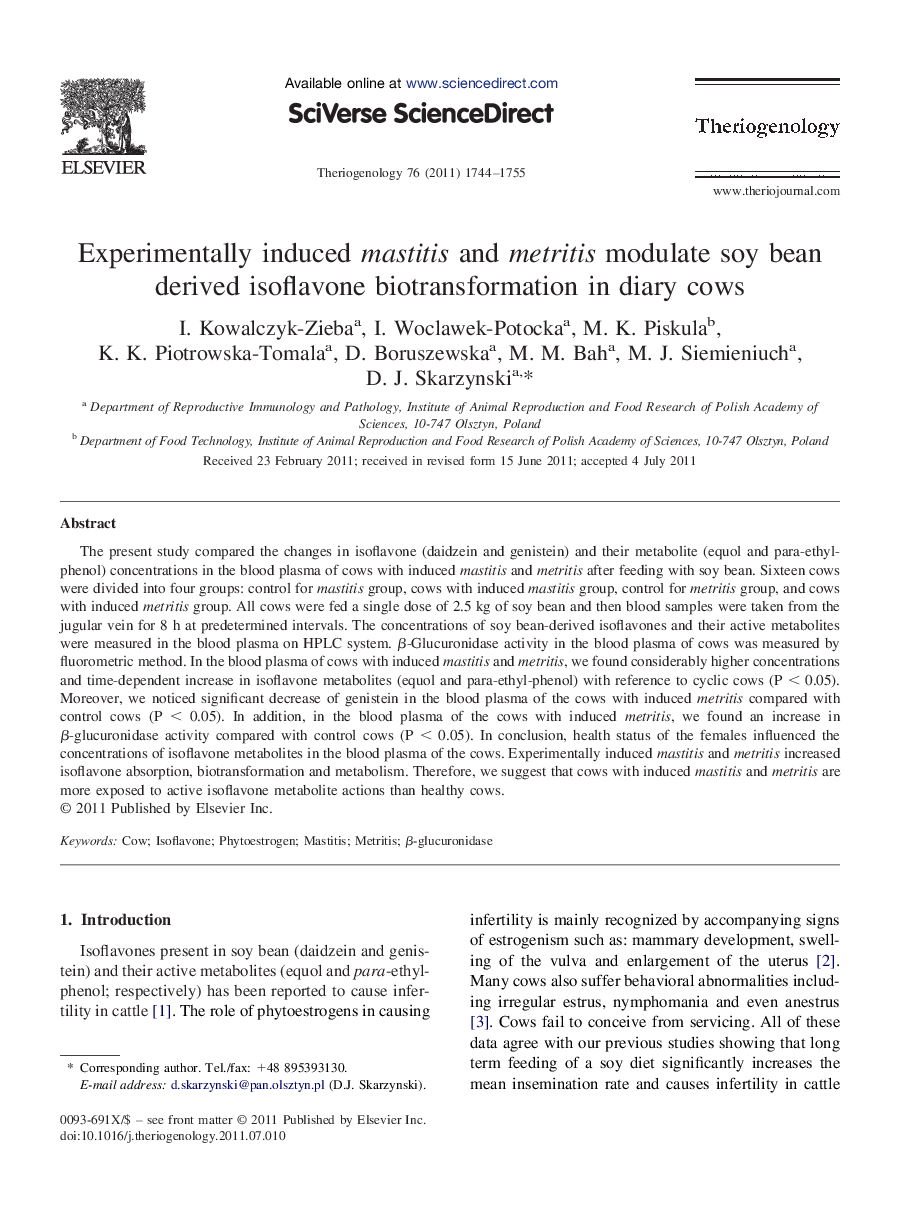| Article ID | Journal | Published Year | Pages | File Type |
|---|---|---|---|---|
| 10892577 | Theriogenology | 2011 | 12 Pages |
Abstract
The present study compared the changes in isoflavone (daidzein and genistein) and their metabolite (equol and para-ethyl-phenol) concentrations in the blood plasma of cows with induced mastitis and metritis after feeding with soy bean. Sixteen cows were divided into four groups: control for mastitis group, cows with induced mastitis group, control for metritis group, and cows with induced metritis group. All cows were fed a single dose of 2.5 kg of soy bean and then blood samples were taken from the jugular vein for 8 h at predetermined intervals. The concentrations of soy bean-derived isoflavones and their active metabolites were measured in the blood plasma on HPLC system. β-Glucuronidase activity in the blood plasma of cows was measured by fluorometric method. In the blood plasma of cows with induced mastitis and metritis, we found considerably higher concentrations and time-dependent increase in isoflavone metabolites (equol and para-ethyl-phenol) with reference to cyclic cows (P < 0.05). Moreover, we noticed significant decrease of genistein in the blood plasma of the cows with induced metritis compared with control cows (P < 0.05). In addition, in the blood plasma of the cows with induced metritis, we found an increase in β-glucuronidase activity compared with control cows (P < 0.05). In conclusion, health status of the females influenced the concentrations of isoflavone metabolites in the blood plasma of the cows. Experimentally induced mastitis and metritis increased isoflavone absorption, biotransformation and metabolism. Therefore, we suggest that cows with induced mastitis and metritis are more exposed to active isoflavone metabolite actions than healthy cows.
Related Topics
Life Sciences
Agricultural and Biological Sciences
Animal Science and Zoology
Authors
I. Kowalczyk-Zieba, I. Woclawek-Potocka, M.K. Piskula, K.K. Piotrowska-Tomala, D. Boruszewska, M.M. Bah, M.J. Siemieniuch, D.J. Skarzynski,
